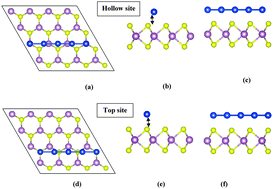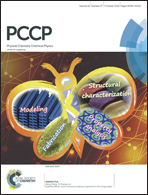Electronic stability and electron transport properties of atomic wires anchored on the MoS2 monolayer†
Abstract
The stability, electronic structure, and electron transport properties of metallic monoatomic wires anchored on the MoS2 monolayer are investigated within the density functional theory. The anchoring of the atomic wires on the semiconducting monolayer significantly modifies its electronic properties; the metallic characteristics of the assembled monolayers appear in the density of states and band structure of the system. We find that Cu, Ag and Au wires induce the so-called n-type doping effect, whereas Pt wires induce a p-type doping effect in the monolayer. The distinctly different behavior of Pt–MoS2 compared to the rest of the metallic wires is reflected in the calculated current–voltage characteristics of the assembled monolayers with a highly asymmetric behavior of the out-of-the-plane tunneling current with respect to the polarity of the external bias. The results of the present study are likely to extend the functionality of the MoS2 monolayer as a candidate material for the novel applications in the areas of catalysis and optoelectronic devices.


 Please wait while we load your content...
Please wait while we load your content...